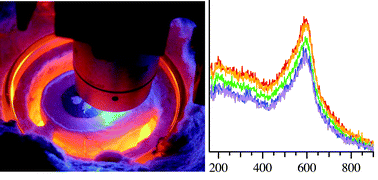High temperature mapping of surface electrolyte oxide concentration in solid oxidefuel cells with vibrational Raman spectroscopy†
Abstract
Experiments described in this work employ

* Corresponding authors
a
University of Maryland, Department of Chemistry and Biochemistry, College Park, Maryland, USA
E-mail:
beigenbr @.umd.edu
Fax: +1 301 3149121
Tel: +1 301 4057022
b
Montana State University, Department of Chemistry and Biochemistry, Bozeman, Montana, USA
E-mail:
rawalker@chemistry.montana.edu
Fax: +1 406 9945407
Tel: +1 406 9944801
Experiments described in this work employ

 Please wait while we load your content...
Something went wrong. Try again?
Please wait while we load your content...
Something went wrong. Try again?
B. C. Eigenbrodt and R. A. Walker, Anal. Methods, 2011, 3, 1478 DOI: 10.1039/C0AY00644K
To request permission to reproduce material from this article, please go to the Copyright Clearance Center request page.
If you are an author contributing to an RSC publication, you do not need to request permission provided correct acknowledgement is given.
If you are the author of this article, you do not need to request permission to reproduce figures and diagrams provided correct acknowledgement is given. If you want to reproduce the whole article in a third-party publication (excluding your thesis/dissertation for which permission is not required) please go to the Copyright Clearance Center request page.
Read more about how to correctly acknowledge RSC content.
 Fetching data from CrossRef.
Fetching data from CrossRef.
This may take some time to load.
Loading related content
